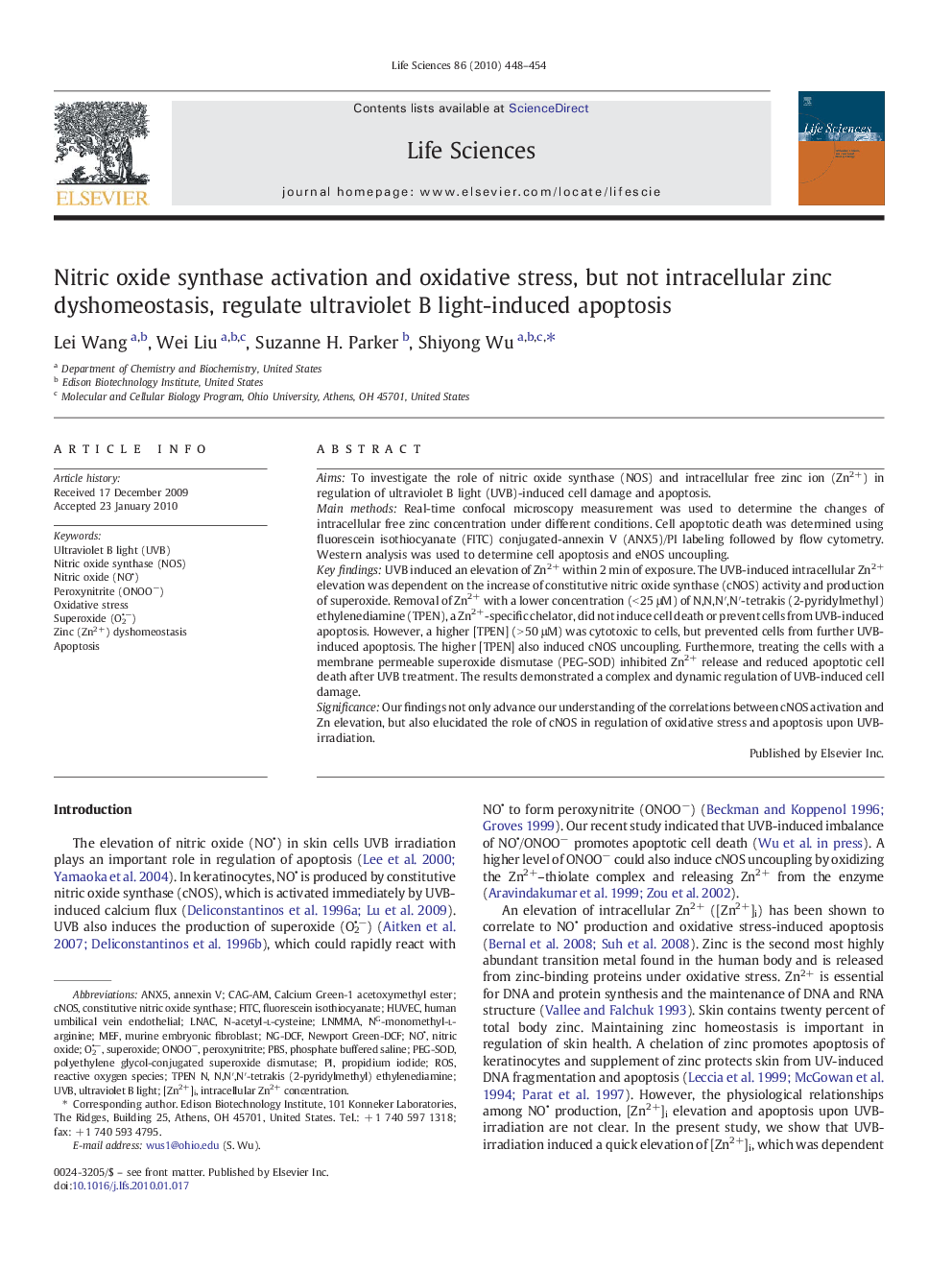| Article ID | Journal | Published Year | Pages | File Type |
|---|---|---|---|---|
| 2552505 | Life Sciences | 2010 | 7 Pages |
AimsTo investigate the role of nitric oxide synthase (NOS) and intracellular free zinc ion (Zn2+) in regulation of ultraviolet B light (UVB)-induced cell damage and apoptosis.Main methodsReal-time confocal microscopy measurement was used to determine the changes of intracellular free zinc concentration under different conditions. Cell apoptotic death was determined using fluorescein isothiocyanate (FITC) conjugated-annexin V (ANX5)/PI labeling followed by flow cytometry. Western analysis was used to determine cell apoptosis and eNOS uncoupling.Key findingsUVB induced an elevation of Zn2+ within 2 min of exposure. The UVB-induced intracellular Zn2+ elevation was dependent on the increase of constitutive nitric oxide synthase (cNOS) activity and production of superoxide. Removal of Zn2+ with a lower concentration (< 25 μM) of N,N,N′,N′-tetrakis (2-pyridylmethyl) ethylenediamine (TPEN), a Zn2+-specific chelator, did not induce cell death or prevent cells from UVB-induced apoptosis. However, a higher [TPEN] (> 50 μM) was cytotoxic to cells, but prevented cells from further UVB-induced apoptosis. The higher [TPEN] also induced cNOS uncoupling. Furthermore, treating the cells with a membrane permeable superoxide dismutase (PEG-SOD) inhibited Zn2+ release and reduced apoptotic cell death after UVB treatment. The results demonstrated a complex and dynamic regulation of UVB-induced cell damage.SignificanceOur findings not only advance our understanding of the correlations between cNOS activation and Zn elevation, but also elucidated the role of cNOS in regulation of oxidative stress and apoptosis upon UVB-irradiation.
